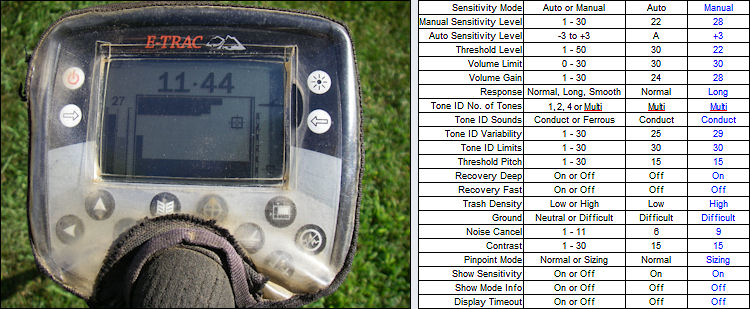Good question, Jack. That seems to be one of those personal preferences. There are many who prefer detecting with a wide open screen and using the Ferrous two-tone setting. Personally, I don't like working parks or similar sites with a wide open discrimination pattern. There are simply too many targets competing for my attention, particularly since I use Conduct and multi-tone at such sites exclusively.
For the most part I am after a primary target, so I have made it a point to try and recognize the signals given by those desirable targets hidden amongst trash or iron. The discrimination pattern I have been using is a slightly modified version of the one Andy had posted elsewhere, and it has more than met my needs when working parks and town commons. I have had no problems with depth while using the discrimination pattern, but I also don't obsess about depth. My main concern is trying to pick up the good targets hidden at trashy sites. Depth-wise they often are well within the reach of most detectors - if the masking effect of trash were not a problem that is.
Here is a snapshot of the discrimination pattern I currently use, and the settings that go with it.
The pattern rejects the following Fe/Co lines:
01-01 through 01-37
02-01 through 02-37
03-01 through 03-37
04-01 through 04-32
05-01 through 05-32
06-01 through 06-32
07-01 through 07-32
08-01 through 08-28
18-01 through 18-03
down to
27-01 through 27-03
28-01 through 28-50
down to
35-01 through 35-50
The entire Co 50 line is also rejected.
A few notes:
Very deep silver will not always sound off the way we may have come to expect. Often the telltale sign is an initial crackle, but sounding different from the slight chatter a high sensitivity setting may be causing. It isn't until the target is closely examined with very short and slow sweeps that the signal cleans up and the Fe/Co numbers begin to stabilize, though a pronounced bounce may continue. Yes, I have had very deep coins hit with an Fe of 24 through 27, but having a slight bounce of 12 through 17. If both pinpoint and discrimination modes agree on the target's location, I dig.
Don't shy away from a manual sensitivity setting of 27 through 29, even when the Etrac is suggesting a much lower number! You will hear chatter, yes, as the E-Trac is working a bit 'hot', but you will also, with a bit of patience, hear the very deep targets you may otherwise miss with a lower setting or while in Auto Sensitivity.
When working an old site having many competing signals,
go very slow! I mean crawling-type slow. A fast sweep at such sites will cause you to miss the signals of very deep targets, or those of very small coins, such as half-dimes.
It is very important to have a low threshold setting. I have mine set at 22 for the particular headphones I am currently using, Killer B Hornet, though I had it set to 25 while using the Original Gray Ghost headphones.
If you haven't yet tried it, use the Long Response setting. You may be pleasantly surprised at how well it works on those deep silver targets.
Though I will normally use Noise Cancel by allowing the E-Trac to select a channel, I have found that 5 and 9 work best for me at most sites.
If using the X-1 probe, and if you have the E-Trac set to a high manual sensitivity (26+), you may hear some chatter while probing for the target, which can compete with the signal of a small coin or one that is still just barely beyond the probe's reach. What I do in such cases is to quickly toggle to Auto Sensitivity, which I already had set to +1, and this quiets things down, allowing for the desired target's signal to become more prominent. Once done, just toggle back to the manual setting.
I hope that helps.










